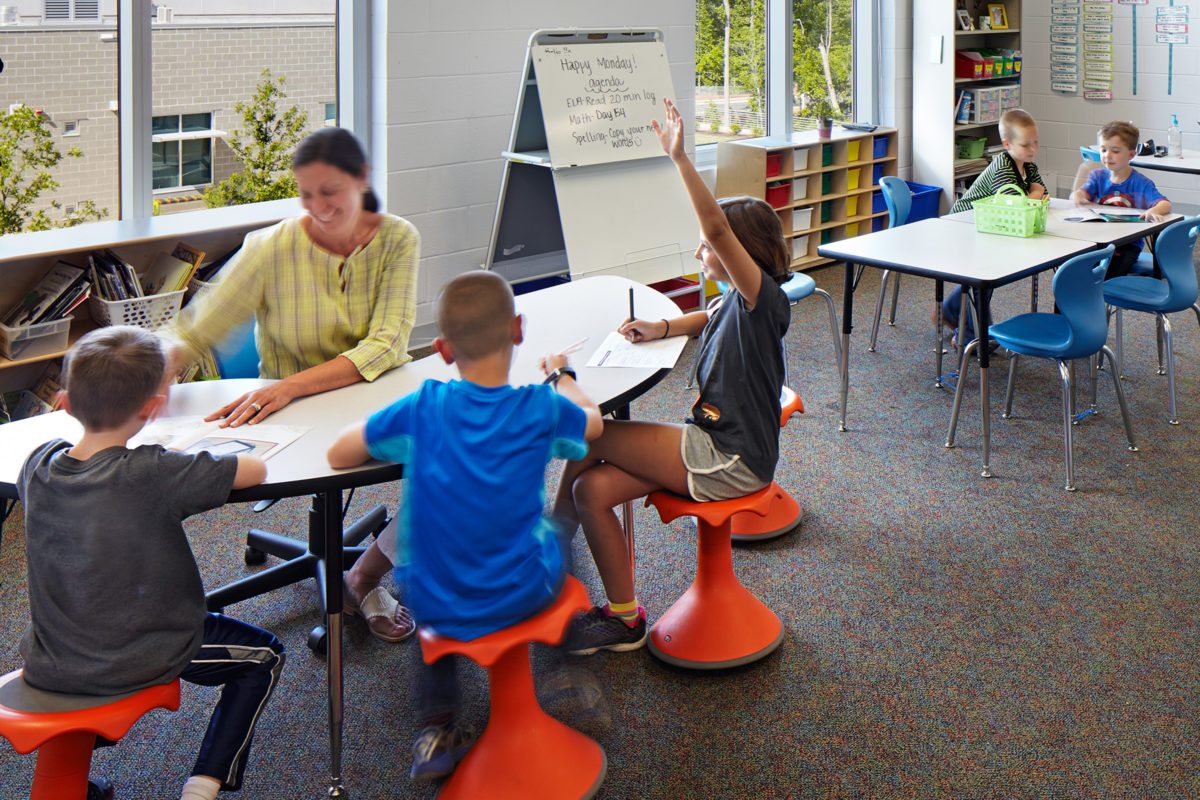Designing K-12 Learning Environments that Promote Critical Thinking, Problem Solving

The most pressing questions facing businesses and schools today are alike and aligned: What will our next generation of jobs look like? Will today’s students have the knowledge and skills to perform those jobs tomorrow, given the traditional instructional delivery systems in place? Will there be enough highly skilled problem solvers to meet 21st century challenges, from the economy to the environment?
According to the report, “Are they really ready to work? Employers Perspectives on the Basic Knowledge and Applied Skills of New Entrants to the 21st Century U.S. Workforce,” the U.S. is not doing enough, fast enough, to prepare for a vibrant economic future for our children and our nation.
“To succeed in today’s workplace, young people need more than basic reading and math skills. They need substantial content knowledge and information technology skills; advanced thinking skills; flexibility to adapt to change; and interpersonal skills to succeed in multicultural, cross functional teams.”
Today’s students need both basic knowledge and applied skills to be prepared for the jobs of the future. Reading comprehension, mathematics, and foreign languages with knowledge of science is necessary, basic knowledge for high school graduates. In addition, many employers see applied skills such as independent learning, professionalism and work ethic, and critical thinking/problem solving skills as “very important” for job success. Without this dual preparation, our high school, college, and post-college graduates will not be adequately prepared for future employment.
How the Changing Learning Environment Impacts 21st Century Education
We now know definitively that students learn in multiple styles with different preferences for learning environments. Understanding these “preferences” is critical, because the choice to accommodate or not accommodate can have a significant positive or negative impact on student success in both the immediate and long term. Research has shown that in order for students to use the part of their brain that handles complex thinking skills, they must be provided an environment that allows them to employ their strongest method of learning to process information.
The same is true with an individual’s environmental preferences for work and learning. Without an environment conducive to a student’s preferences (amount of light, temperature control, quiet or noisy, etc.), learning and retention can not take place. In an environment that is undesirable for the student, his or her brain connects to the portion dealing with survival, and attention is focused on meeting personal needs rather than learning. This information offers a strong correlation to the workplace and the future of workplace design, as we increasingly recognize the importance of choice and comfort for people to be most productive. The built environment must respond by providing learning and work spaces that enable inhabitants to engage in their preferred methods.
The challenge for today’s school districts is to provide an educational environment that supports these varied learning preferences and allows students to learn in the methods best suited to their personal styles. This does not mean we throw away the standards for excellence that are part of the nation’s schools, but instead that we accept those standards as tools to guide the process. This research leads us to the conclusion that school facilities make a difference in student achievement – the spaces we design for our students matter.
As designers, we must lead a collaborative process to create spaces that empower instructors to personalize the teaching of basic knowledge and build on that foundation to help students apply new knowledge to solve problems – delivering key skills for future jobs. To accommodate different learning styles and preferences, we must provide flexibility in the types of spaces that comprise classroom environments. Classrooms should facilitate group discussion, collaborative work, peer-to-peer learning, and provide individual learning stations to support computer-driven instruction. Space flexibility, furniture mobility, and the space for student movement have become much more critical elements in supporting student achievement as we educate a generation that learns differently and will one day go on to solve unforeseen challenges.
